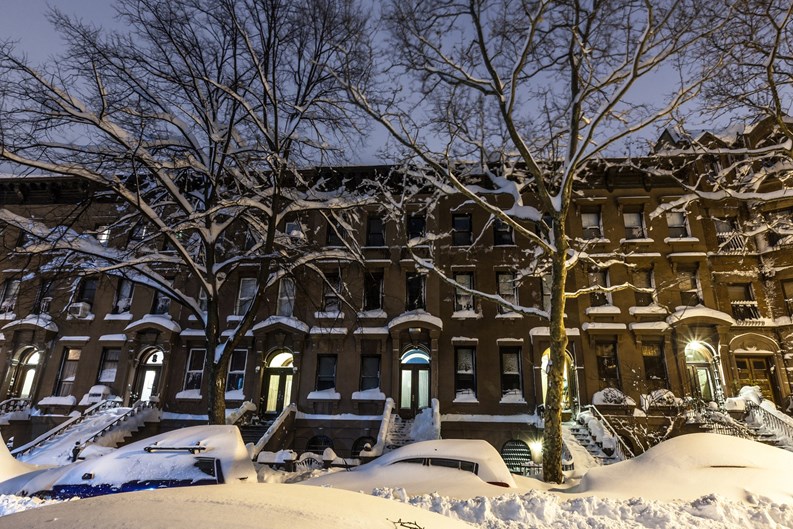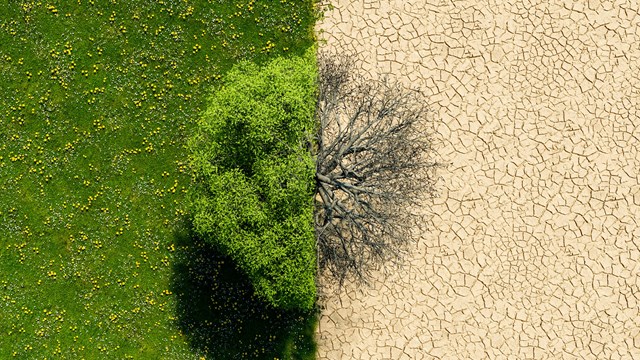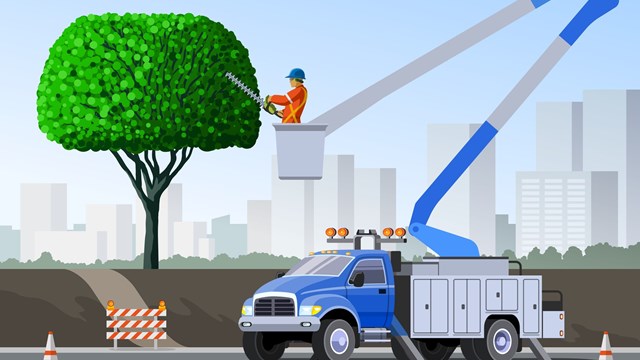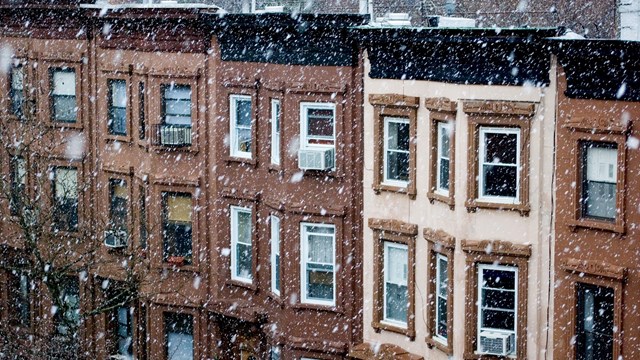Like people, trees are constantly changing, growing organisms -- and they need a period of rest after the long growing season from spring to autumn. Winter is when they get that rest. Tree pits are a great way to spruce up your building’s exterior, and properly winterizing them can maximize the health of your trees for the next growing season.
Getting Ready for Winter
Elizabeth Ewell, the business manager for Green Keepers, an organization that provides horticultural, sanitation and pest control services throughout New York City, recommends "[Cleaning] out any annuals, summer plants, at the end of the season. Turn the dirt -- then you can plant winter plants, like decorative cabbage or kale. Some people like to let everything lay fallow and place boughs over the tree bed. Another option is pine bark chips. This is also a good time to fertilize.” Water from winter rain and snow will help to push the fertilizer into the ground, where it can be made use of by the tree during its dormant phase.
One thing that Ewell sees too often is evergreen shrubs planted in tree pits, which she says is a terrible idea. “They compete with the trees" for root space, nutrients, and water. “No shrubs, not good!" she says. "You have to be careful as well when you cover the ground, because you can create cover for rodents.”
The Bane of City Living
Rodents and urban living have a long established, if despised, relationship. Rats and mice will dig holes in the tree pit and tunnel in for the winter. “This can be a major problem,” explains Ewell, “depending on how badly the surrounding neighborhood is infested.”
And let’s be honest: there are no neighborhoods in New York City that don’t have some level of rat population. “The other factor is how conscientious supers, managers, and owners are about trash storage and removal,” Ewell says. It’s the trash that attracts the rodents. “They don’t need much, but they have to eat,” she adds and also suggests that pine bark is a good option in questionable cases, as the material doesn’t attract rodents.
Snow and Ice
One thing we know for sure is that at some point, your tree pits will get covered in snow, ice, sleet, etc. Now, this precipitation in itself is not bad for the trees. As a matter of fact, cold precipitation is something trees come to expect, and they use it to their benefit. But we're living in a city, not a forest.
“The problem,” explains Ewell, “is when snow gets piled against the tree trunk and fills the pit. That’s damaging. That snow is full of salt and chemicals from ‘snow-melt’, and it gets concentrated when the snow melts and it settles into the earth. And ‘snow-melt’ is not just salt; it's a whole different compound. As soon as possible, remove the piled up snow from the tree pit. Push it into the street.”
The good news is that trees, like New Yorkers themselves, are resilient. “They have a tendency to survive,” stresses Ewell, “even under the most awful conditions.” So get out there and commune with your trees for the winter.
A J Sidransky is a staff writer for The Cooperator and published novelist.







Leave a Comment